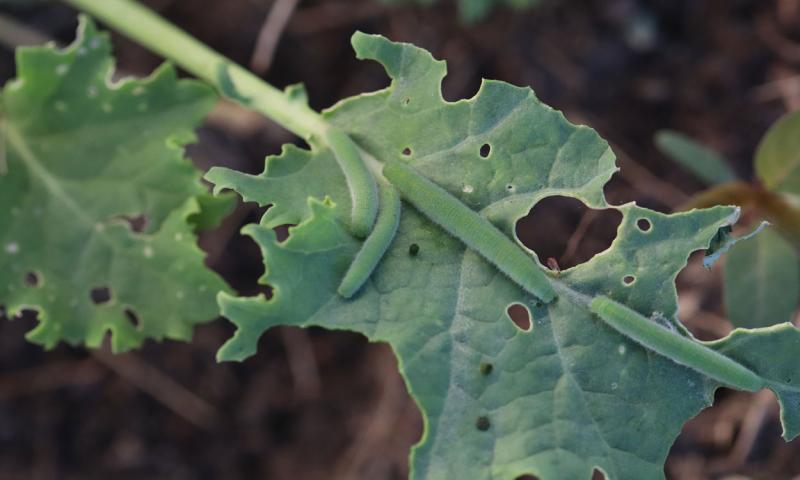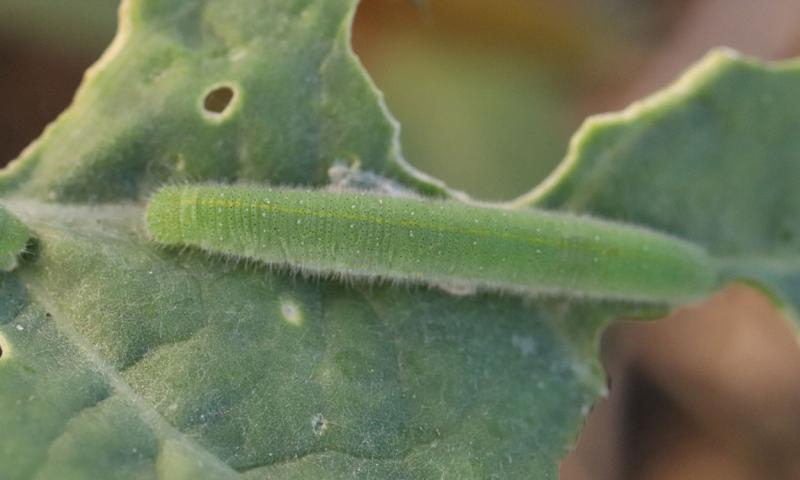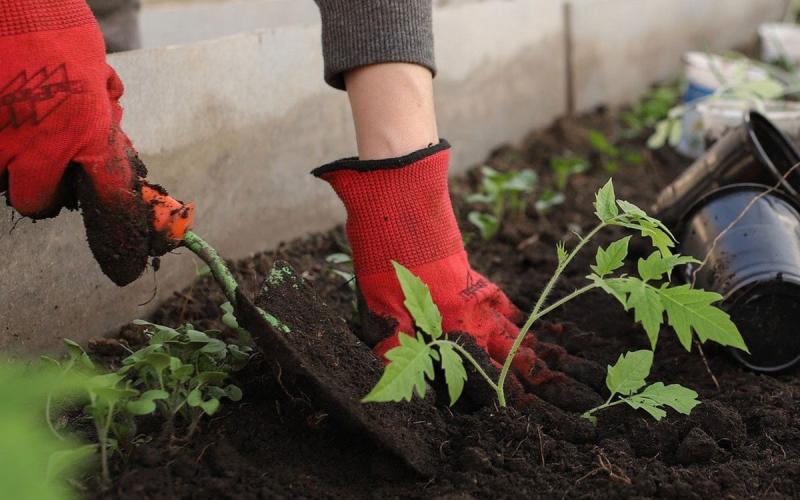
One of the worst things to observe in your garden are caterpillars heavily defoliating your plants. But unfortunately, that’s exactly what the imported cabbageworms (cabbage white) caterpillars do.
Imported cabbageworms feed on cabbage, broccoli, Brussel sprouts, cauliflower, kale, turnips, and radishes as well as some weeds. The indicator that these caterpillars will soon be feeding in your garden is the presence of the female imported cabbageworm butterflies (Figure 1).
The butterflies are white and have a dark marking on the tip of the wings and black spots on each wing. Sometimes the inner spot is faded. These butterflies will often be observed fluttering around the garden but pay close attention to the plants that they land on, as they are likely laying eggs on the underside of the leaves.

Within a week of seeing the butterflies the caterpillars will be active on the plants that the eggs were laid on. Signs of their presence on garden crops includes small, smooth holes, which are produced by the recently hatched caterpillars. As they develop entire leaves can be skeletonized with only the midrib of leaves remaining. It is common to observe more than one imported cabbageworm on a single plant or even on a single leaf (Figure 2).
If left unmanaged imported cabbageworms can defoliate the entire plant. In plants like cabbage, the caterpillars may also borer into the developing heads. The imported cabbageworm caterpillars are dark green with a solid yellow line that runs down the middle of their back. They have a broken yellow line or hashmarks on each side of their body (Figure 3).
Management

Since these caterpillars are not extremely mobile, it is possible to simply remove the caterpillars by hand and destroy them. However, insecticides labeled for gardens can be used if there are a lot of caterpillars present on numerous plants. Remember if you use an insecticide to always check the pre-harvest interval that is present on the label. The preharvest interval indicates the number of days after treatment that must elapse before harvest of the treated crop can occur.
These caterpillars can often be managed by natural enemies or also diseases that affect their populations. Since there are multiple generations (2 to 4 generations per year), it is important to continue scouting for these pests even after one generation of caterpillars is effectively removed from the garden.
If the caterpillars are present on harvested plants or potentially inside of heads, soak the harvested plant parts in a salt water bath, which will effectively remove the caterpillars (and also any other critters that were present).


